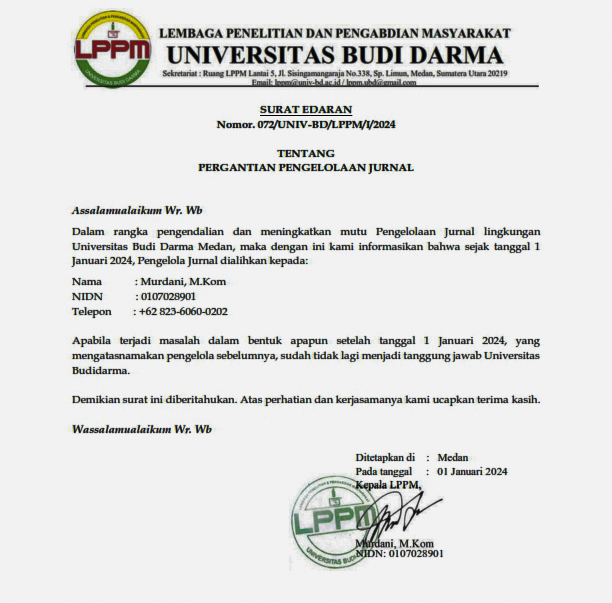MENGKLUSTER JUMLAH KABUPATEN/KOTA YANG MELAKSANAKAN KAWASAN TANPA ROKOK (KTR) DI 50% SEKOLAH MENURUT PROVINSI DENGAN K-MEDOIDS
DOI:
https://doi.org/10.30865/komik.v3i1.1672Abstract
A non-smoking area (KTR) is a room or area that is declared prohibited from engaging in smoking, producing, selling, advertising, promoting, or promoting tobacco products. The problem of smoking is still a national problem that needs to be continuously addressed, because it involves various aspects of problems in life, namely economic, social, political aspects, especially health aspects. It is estimated that more than 40.3 million children live with smokers and are exposed to cigarette smoke in their environment and are referred to as passive smokers. Meanwhile, we know that children who are exposed to secondhand smoke can have an increased risk of developing bronchitis, pneumonia, middle ear infections, asthma, and slowed lung growth. This early health damage can cause poor health in adulthood. Even non-smoker adults who are constantly exposed will also have an increased risk of lung cancer and other types of cancer. K-Medoids Clustering Algorithm is one algorithm used to group data.The data used are the data of 34 provinces implementing non-smoking areas obtained from the Indonesian Health Office. The data will be grouped into two clusters namely high and low clusters. The results obtained are expected to be input to the relevant agencies in implementing the non-smoking area
Keywords : Data Mining, K-Medoids, Clustering, non smoking area.References
M. G. Sadewo, A. P. Windarto, and D. Hartama, “Penerapan Datamining Pada Populasi Daging Ayam Ras Pedaging Di Indonesia Berdasarkan Provinsi Menggunakan K-Means,†InfoTekJar (Jurnal Nas. Inform. dan Teknol. Jaringan), vol. 2, no. 1, pp. 60–67, 2017.
A. Saleh, “PENERAPAN DATA MINING DENGAN METODE KLASIFIKASI NAÃVE BAYES UNTUK MEMPREDIKSI KELULUSAN MAHASISWA DALAM MENGIKUTI ENGLISH PROFICIENCY TEST ( Studi Kasus : Universitas Potensi Utama ) PENERAPAN DATA MINING DENGAN METODE KLASIFIKASI NAÃVE MENGIKUTI ENGLISH ,†no. February 2015, 2016.
B. D. Satoto, B. K. Khotimah, and Iswati, “PENDIDIKAN MENGGUNAKAN PARTITION AROUND MEDOIDS DAN,†vol. 1, no. 1, pp. 17–24, 2015.
D. F. Pramesti, M. T. Furqon, and C. Dewi, “Implementasi Metode K-Medoids Clustering Untuk Pengelompokan Data Potensi Kebakaran Hutan / Lahan Berdasarkan Persebaran Titik Panas ( Hotspot ),†J. Pengemb. Teknol. Inf. dan Ilmu Komput., vol. 1, no. 9, pp. 723–732, 2017.
H. Zayuka, S. M. Nasution, and Y. Purwanto, “Perancangan Dan Analisis Clustering Data Menggunakan Metode K-Medoids Untuk Berita Berbahasa Inggris,†e-Proceeding Eng. Vol.4, No.2 Agustus 2017, vol. 4, no. 2, pp. 1–9, 2017.





